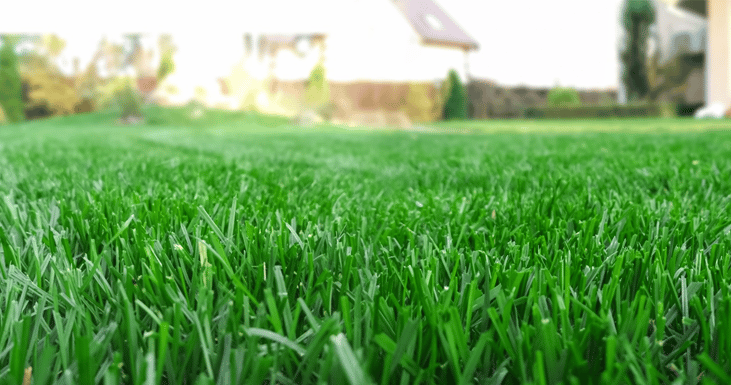Many areas with turfgrass, from home lawns to sports fields to golf courses, have one common aspect they share the occurrence of weeds. Whether it is dandelion on a home lawn or goosegrass on a golf course green, their mere presence is aesthetically displeasing leading to the adoption of control measures.
Control of weeds is crucial for the health of turfgrass. Left uncontrolled, weeds compete with turfgrass for water, nutrients, and light, a battle that favors weeds because they are more competitive than most turfgrass species.Moreover, the presence of weed species in turfgrasses reduces playing quality, aesthetic value, and usability.
The first step in developing good weed management practices is identifying the weed species within the turfgrass environment.
What types of weeds invade turfgrass?
There are three classes of turfgrass weeds: weedy grasses, sedges or grass-like weeds, and broadleaf weeds.
Weedy grasses
Weedy grasses are weeds in the grass family which have similar characteristics to turfgrasses but are often undesirable in a lawn. Weedy grass plants have long, slender leaf blades and seed heads that often rise above the plant base and are generally unsightly in the lawn. For example, crabgrass, goosegrass, and annual bluegrass.
Sedges and grass-like weeds
Sedges are characterized as having long, slender leaf blades similar to grasses but are easily differentiated from turfgrasses due to their triangular stems. Grass-like weeds have characteristics that are similar to grasses but are not true grass species. They also have showy flowers that are easily distinguishable from many turfgrass and weedy grass species. For example, purple nutsedge, yellow nutsedge, and green kyllinga.
Broadleaf weeds
Broadleaf weeds are distinguished from weedy grasses, sedges, and grass-like weeds by their broad, rounded leaves. Broadleaf weeds typically have noticeable flowers and/or fruit capsules. Another way to spot a broadleaf weed is to look closely at the veins of a leaf. Veins that are branched or netted are a characteristic of broadleaf weeds whereas parallel veins are a characteristic of grasses and sedges.
Understanding the biology and ecology of turfgrass weeds
After identifying the type of weed that is infesting turfgrass, an understanding of the biology and ecology of the species will provide some keys that can be used to develop management strategies. In particular, knowing the lifecycle of weeds is important information that is used in the development of management practices.
Turfgrass weeds have lifecycles that are either annual, biennial, or perennial.
- Annual lifecycle – this class of turfgrass weeds relies totally on seed production for survival. Plants germinate in the spring or early summer and reproduce via seed in late summer to early fall. In the fall, mature plants die after producing seeds.
- Biennial lifecycle – this class of turfgrass weeds relies equally on seed production and vegetative reproduction for their survival. Some plants germinate from seed in the spring or early summer while some will emerge from vegetative structures. Typically, biennial plants will remain in a vegetative state for one winter period before maturing, producing seed, and dying in the second year.
- Perennial lifecycle – this class of turfgrass weed relies more on vegetative reproduction than on the production of seeds for their survival. Plants with perennial lifecycles will continue their growth year after year and occasionally produce a few seeds.
Now, after identifying targeted turfgrass weed species and having knowledge of their life cycle, let’s look at some management strategies.
Management strategies for turfgrass weeds
First, turfgrass health must be maintained at the highest level. Weeds invade and exploit environments where they can take advantage of the habitat. When the turfgrass is poorly managed, turfgrass weeds will prevail.
Second, a long-termturfgrass weed management strategy is essential to ensure success. The strategy should include some of the following tactics:
- Take note of the location of seed-producing annual turfgrass weeds that escaped control, matured, and produced seeds. These locations need to receive appropriate attention in the following spring season.
- Following a night when the temperature is below 32 F (0 C), apply a systemic broadleaf herbicide with a methylated seed oil (surfactant) for the control of perennial and biennial turfgrass weeds. This tactic works because after a frost, the weed channels all of its resources from leaves to its root in preparation for winter.
- Depending on the turfgrass weeds present, apply a preemergence herbicide early in spring to control annuals.
- In late spring and early summer, apply postemergence herbicide to target turfgrass weeds that escape preemergence control.
Third, be aware and prevent the possibility of the development of herbicide-resistant turfgrass weeds.
Fourth, be on the lookout for invasive species and take appropriate steps to prevent them from becoming established.
Fifth, keep a record of the strategies used and successes and failures in managing turfgrass weeds.
Further Reading:
Brewer International has been a leader in land and water chemistry since the 1980s and for over 40 years has proudly served its national and regional distributors.
Our products are used widely across the United States in agriculture, aquatics, forestry, rights of way, and land management.
Our customers trust our dedication to quality ingredients, tried and true formulas, and positive outcomes.


